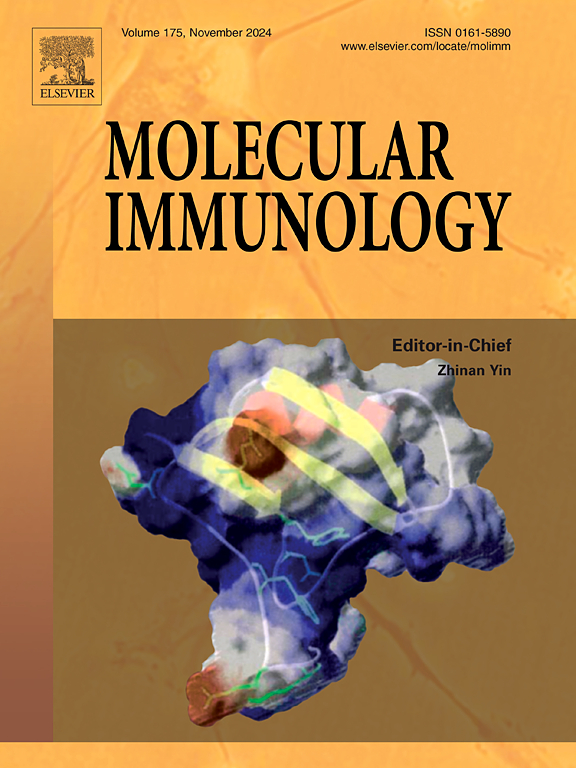LncRNA XIST inhibits mitophagy and increases mitochondrial dysfunction by promoting BNIP3 promoter methylation to facilitate the progression of KBD
IF 3.2
3区 医学
Q2 BIOCHEMISTRY & MOLECULAR BIOLOGY
引用次数: 0
Abstract
The primary mechanisms underlying cartilage destruction in Kashin-Beck disease (KBD) involve excessive chondrocyte death and extracellular matrix (ECM) degradation. While long non-coding RNA XIST (lncRNA XIST) has been implicated in promoting chondrocyte injury in osteoarthritis (OA), its role in KBD-related chondrocyte injury remains poorly understood. In this study, joint tissues were collected from four healthy and four KBD-affected children, as well as five healthy and five KBD-affected adults, to assess the expression of lncRNA XIST. The results revealed a significant upregulation of lncRNA XIST in the cartilage tissues of KBD patients. To model KBD-induced chondrocyte damage in vitro, hypertrophic ATDC5 cells were exposed to 10 ng/ml T-2 toxin for 24 hours, which resulted in increased lncRNA XIST expression. Silencing lncRNA XIST was found to mitigate T-2 toxin-induced ECM degradation and chondrocyte apoptosis by alleviating defects in mitochondrial autophagy and dysfunction. Mechanistically, lncRNA XIST promoted the methylation of the BNIP3 promoter by recruiting DNA methyltransferases (DNMTs) to the BNIP3 promoter region, thereby suppressing BNIP3-mediated mitophagy and exacerbating mitochondrial dysfunction. To establish a KBD rat model, rats were fed a low-selenium diet supplemented with T-2 toxin for four weeks. Knockdown of lncRNA XIST in these rats attenuated articular cartilage damage and apoptosis, while enhancing collagen II expression. In conclusion, lncRNA XIST accelerates KBD progression by inhibiting mitophagy and promoting mitochondrial dysfunction through increased BNIP3 promoter methylation.
LncRNA XIST通过促进BNIP3启动子甲基化,抑制线粒体自噬,增加线粒体功能障碍,促进大骨节病的进展
大骨节病(KBD)软骨破坏的主要机制涉及软骨细胞过度死亡和细胞外基质(ECM)降解。虽然长链非编码RNA XIST (lncRNA XIST)参与促进骨关节炎(OA)的软骨细胞损伤,但其在kbd相关软骨细胞损伤中的作用仍知之甚少。本研究收集4名健康儿童和4名kbd患者的关节组织,以及5名健康成人和5名kbd患者的关节组织,评估lncRNA XIST的表达。结果显示大骨节病患者软骨组织中lncRNA XIST显著上调。为了在体外模拟kbd诱导的软骨细胞损伤,将肥大的ATDC5细胞暴露于10 ng/ml T-2毒素中24 小时,导致lncRNA XIST表达增加。研究发现,沉默lncRNA XIST可通过减轻线粒体自噬缺陷和功能障碍,减轻T-2毒素诱导的ECM降解和软骨细胞凋亡。从机制上说,lncRNA XIST通过将DNA甲基转移酶(dnmt)募集到BNIP3启动子区域来促进BNIP3启动子的甲基化,从而抑制BNIP3介导的线粒体自噬并加剧线粒体功能障碍。为了建立大骨节病大鼠模型,大鼠在低硒饮食中添加T-2毒素4周。lncRNA XIST在这些大鼠中表达下调,减轻了关节软骨损伤和细胞凋亡,同时增强了II型胶原的表达。综上所述,lncRNA XIST通过增加BNIP3启动子甲基化,抑制线粒体自噬和促进线粒体功能障碍,从而加速大骨病的进展。
本文章由计算机程序翻译,如有差异,请以英文原文为准。
求助全文
约1分钟内获得全文
求助全文
来源期刊

Molecular immunology
医学-免疫学
CiteScore
6.90
自引率
2.80%
发文量
324
审稿时长
50 days
期刊介绍:
Molecular Immunology publishes original articles, reviews and commentaries on all areas of immunology, with a particular focus on description of cellular, biochemical or genetic mechanisms underlying immunological phenomena. Studies on all model organisms, from invertebrates to humans, are suitable. Examples include, but are not restricted to:
Infection, autoimmunity, transplantation, immunodeficiencies, inflammation and tumor immunology
Mechanisms of induction, regulation and termination of innate and adaptive immunity
Intercellular communication, cooperation and regulation
Intracellular mechanisms of immunity (endocytosis, protein trafficking, pathogen recognition, antigen presentation, etc)
Mechanisms of action of the cells and molecules of the immune system
Structural analysis
Development of the immune system
Comparative immunology and evolution of the immune system
"Omics" studies and bioinformatics
Vaccines, biotechnology and therapeutic manipulation of the immune system (therapeutic antibodies, cytokines, cellular therapies, etc)
Technical developments.
 求助内容:
求助内容: 应助结果提醒方式:
应助结果提醒方式:


